In the afternoon of June 21, the session of "Glycans in Neuroscience, Cell Recognition, Immunity and Microbiology II" was successfully conducted at the Triumphant Hall of the Seaview Garden Hotel. Prof. Cheng Jin and Prof. Yan Zhang, chaired this session. In this session, ten experts made wonderful presentations. The overview of this session is as follows:
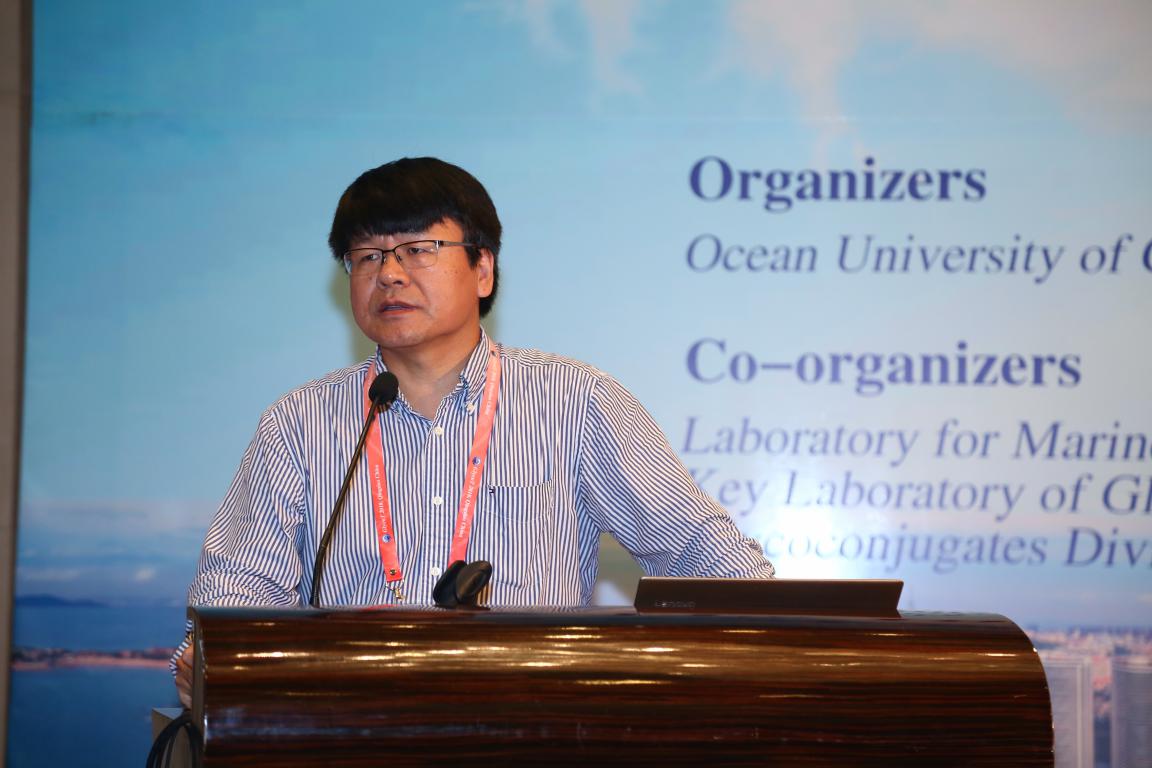
Prof. Zhongwu Guo
rof. Zhongwu Guo (University of Florida, USA) introduced the tumor-associated carbohydrate antigens (TACAs) and a new carbohydrate antigen-based cancer immunotherapies. They developed a novel therapeutic strategy, which combined synthetic vaccines made from unnatural sialo-TACA derivatives and metabolic glycoengineering of cancer cell to express unnatural sialo-TACAs. These vaccines could induce robust IgG immune responses without additional adjuvants.
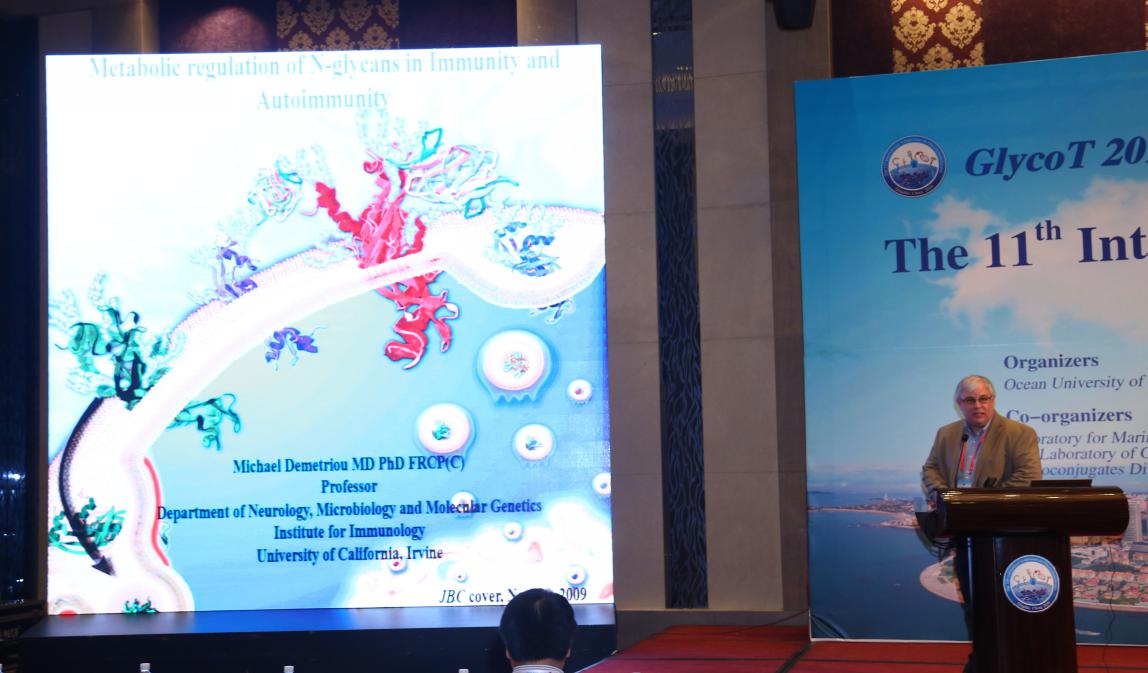
Prof. Michael Demetriou
rof. Michael Demetriou (University of California, Irvine, USA) introduced metabolic regulation of N-glycans in immunity and autoimmunity. They revealed how genetic and metabolic regulation of N-glycans controls the function and activity of cell surface glycoproteins to affect cell growth/differentiation and diseases. They proposed that therapeutic supplementation to N-glycan biosynthesis with GlcNAc may suppress human autoimmunity.
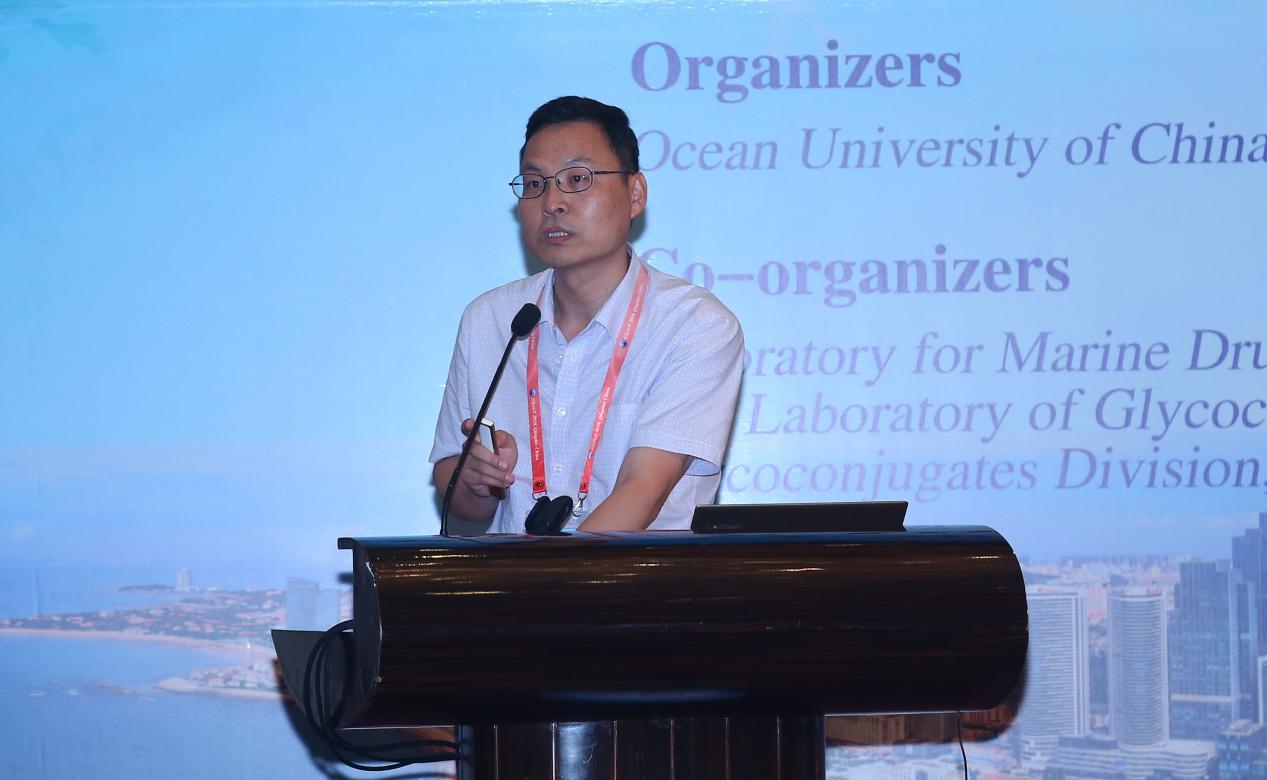
Prof. Wenzhe Li
Prof. Wenzhe Li (Dalian Medical University, China) introduced double-edged effect of core fucosylation in humoral immune responses.They found that the core fucosylation is required for efficient TCR-pMHC-II contacts in CD4+ T cell activation. The balance between specific and degenerate immune response holds important implications for protective immunity versus autoimmunty.
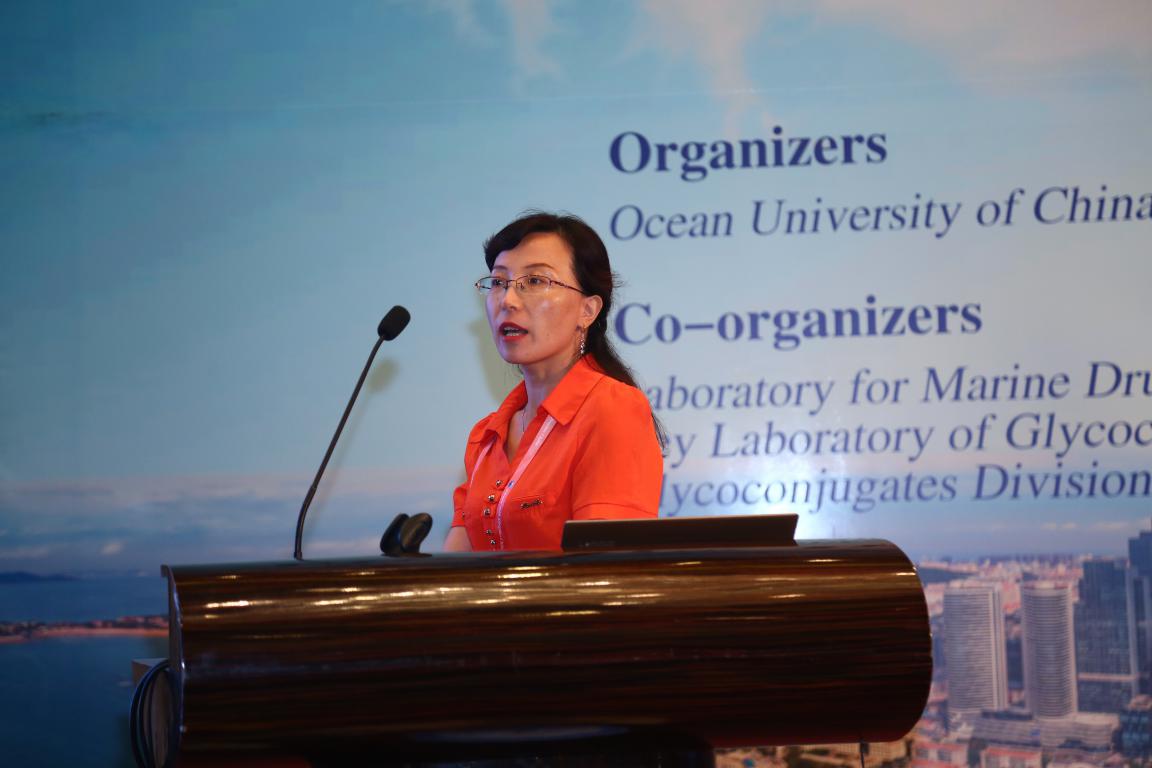
Prof. Wenxia Fang
Prof. Wenxia Fang (Guangxi Academy of Sciences, China) introduced the structural and functional deciphering of Crh transglycosylases. She and her co-workers studied the function of the Crh family by gene knockouts in the filamentous fungus Aspergillus fumigatu, showing Crh enzymes as fungal antigens are good vaccine candidates against aspergillosis infections. Therefore, the Crh transglycosylases are important in immune cells recruitment.
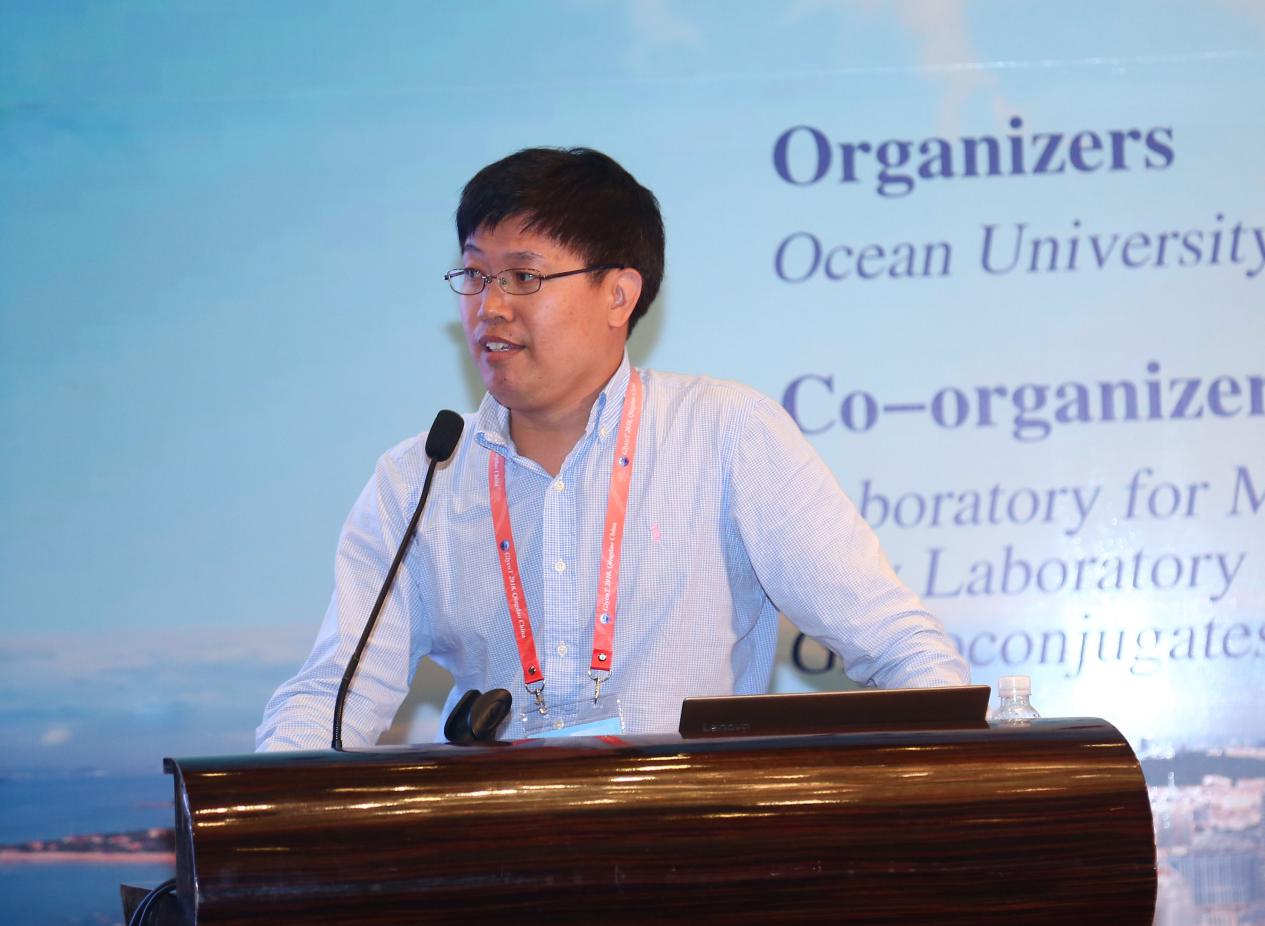
Prof. Xue-Wei Liu
Prof. Xue-Wei Liu (Nanyang Technological University, Singapore) introduced an approach to synthesize biohybrid peptidoglycan oligomers (PGOs) using the plentiful shrimp shell-derived biopolymer chitosan. This study provides a new biomaterial platform with potential applications in microbiology mechanistic studies as well as the development of novel antibiotics.
After coffee break, Prof. Zhongwu Guo and Prof. Xiaodong Gao continued to chair the following content.
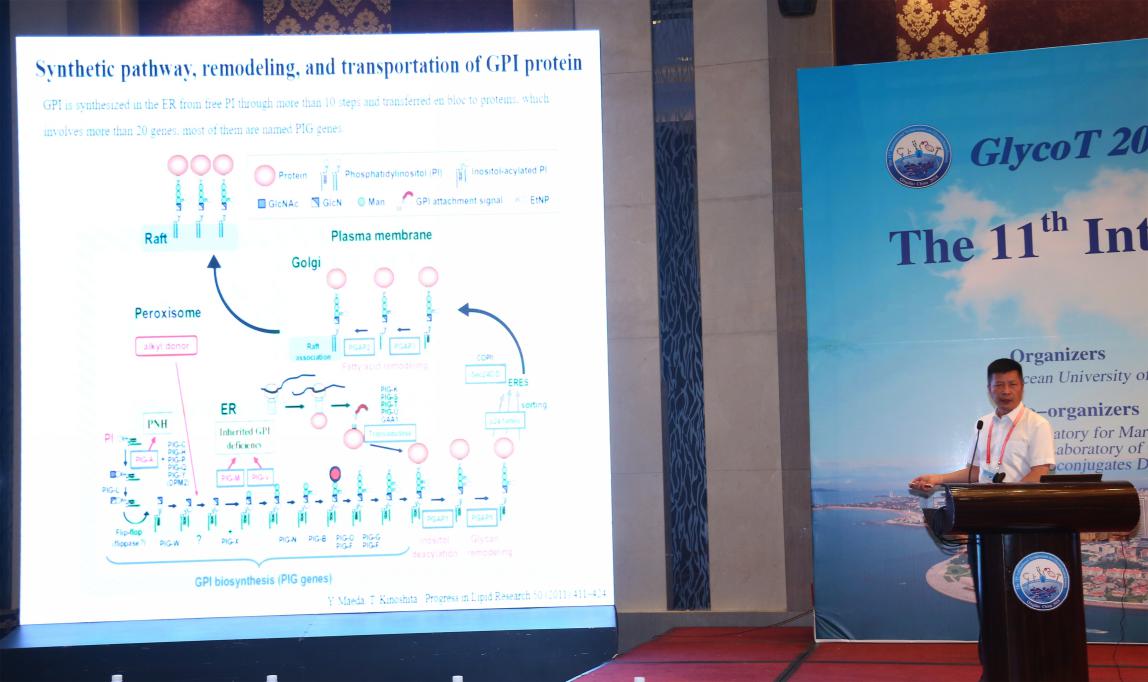
Prof. Cheng Jin
Prof. Cheng Jin (Guangxi Academy of Sciences, China) introduced the function of glycosylphosphatidylinostiol (GPI) anchoring in protein sorting and cell wall synthesis in Aspergillus fumigatus. They found GPI anchoring is an important post-translational modification that ensures proper intracellular transportation of proteins. Their results indicate that GPI anchoring is an ideal target for antifungal therapy.
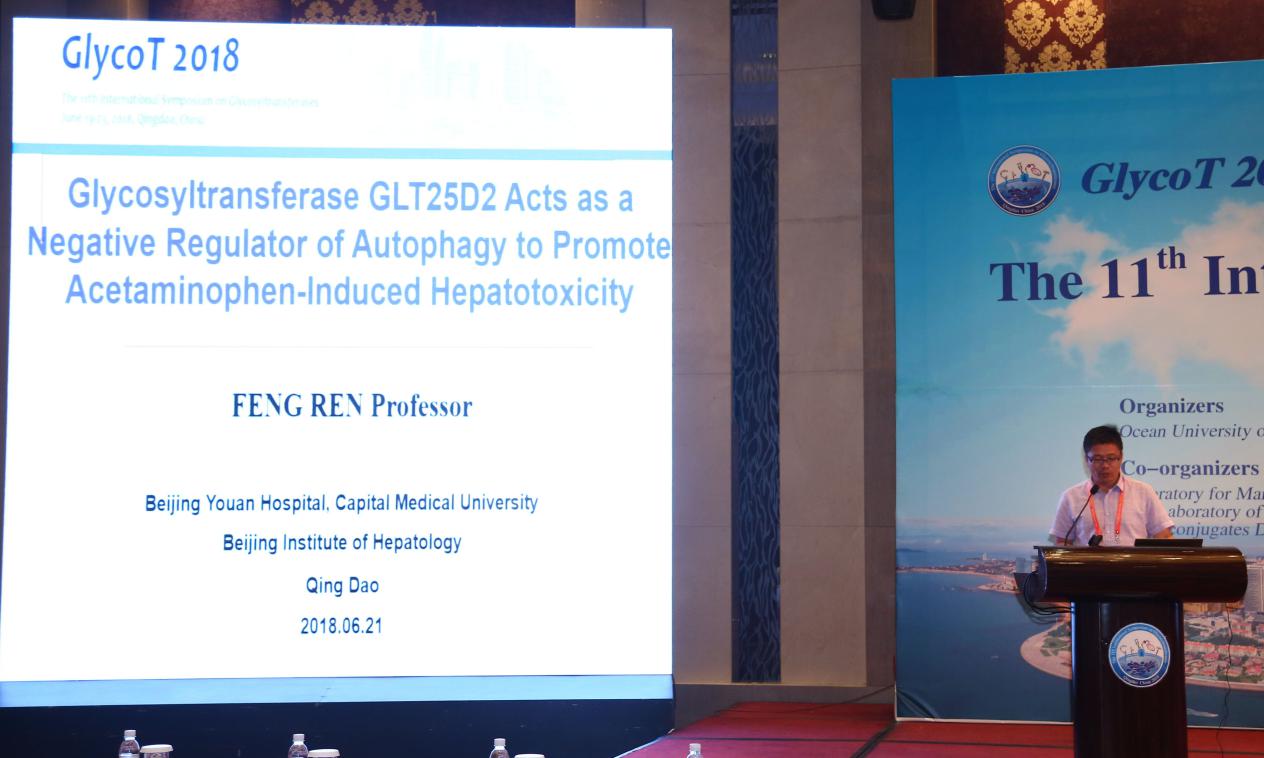
Prof. Feng Ren
Prof. Feng Ren (Capital Medical University, China) introduced glycosyltransferase GLT25D2 which can act as a negative regulator of autophagy to promote acetaminophen-induced hepatotoxicity.They found the increased GLT25D2 suppressed autophagy to promote the occurrence and development of acute liver injury. So, GLT25D2 can be a potential therapeutic choice for acetaminophen-induced hepatotoxicity.
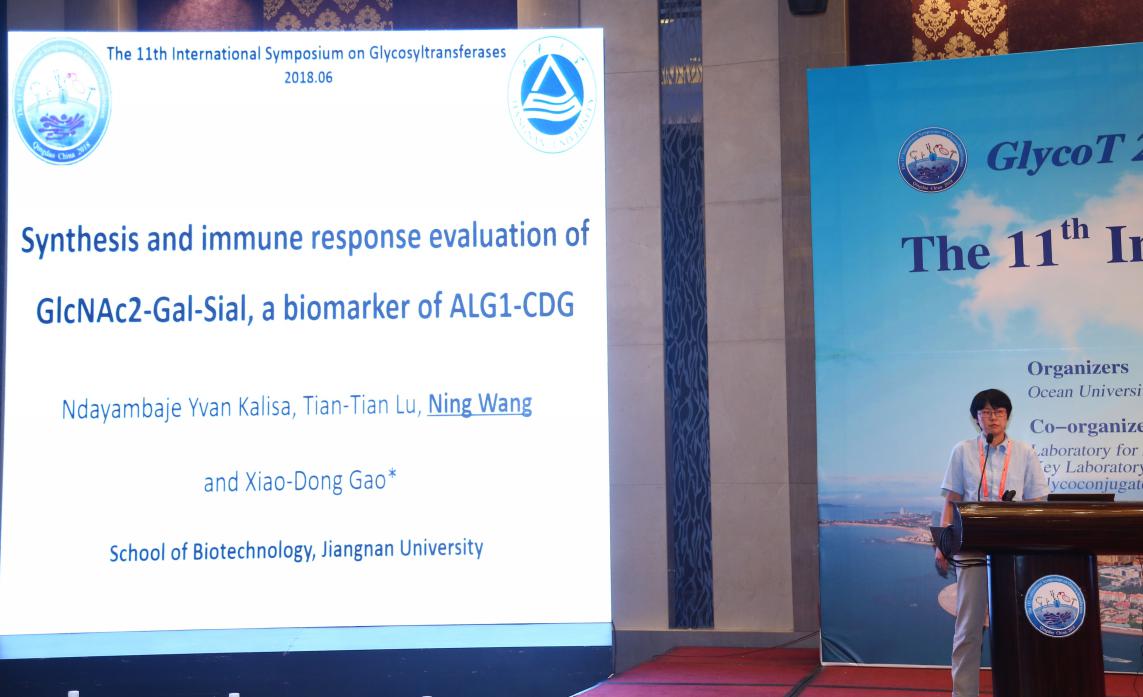
Prof. Ning Wang (Jiangnan University, China) made a presentation about chemo-enzymatic synthesis and immune response evaluation of tetrasaccharide GlcNAc2-Gal-Sial.Her group found that ALG1-CDG biomarker linked to phytanol (PLT) was synthesized and immobilized onto the lipsomes. PLT actived significant, moderate and specific immune response in mice.
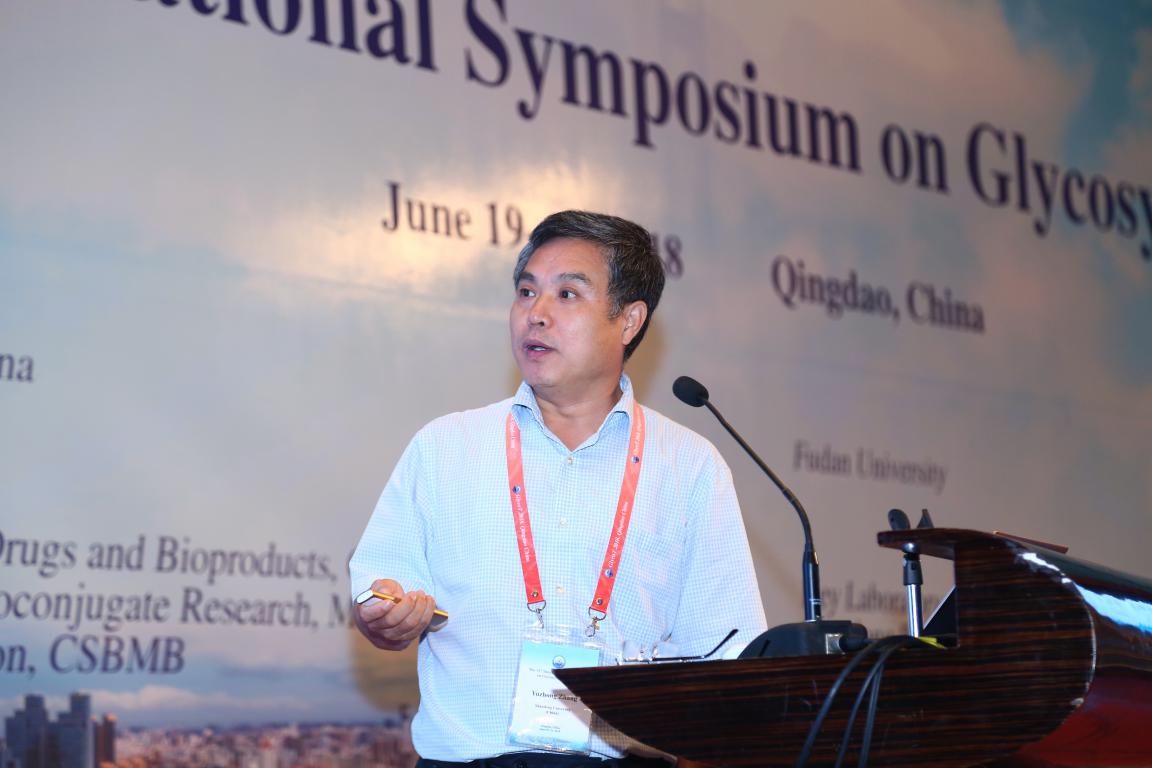
Prof. Yuzhong Zhang (Shandong University, China) introduced novel molecular insights into the catalytic mechanism of marine bacterial alginate lyase AlyGC, from family PL6. They proposed a metal ion-assisted catalytic mechanism of AlyGC for alginate cleavage with a state change mode, which provides a better understanding for polysaccharide lyases and alginate degradation.
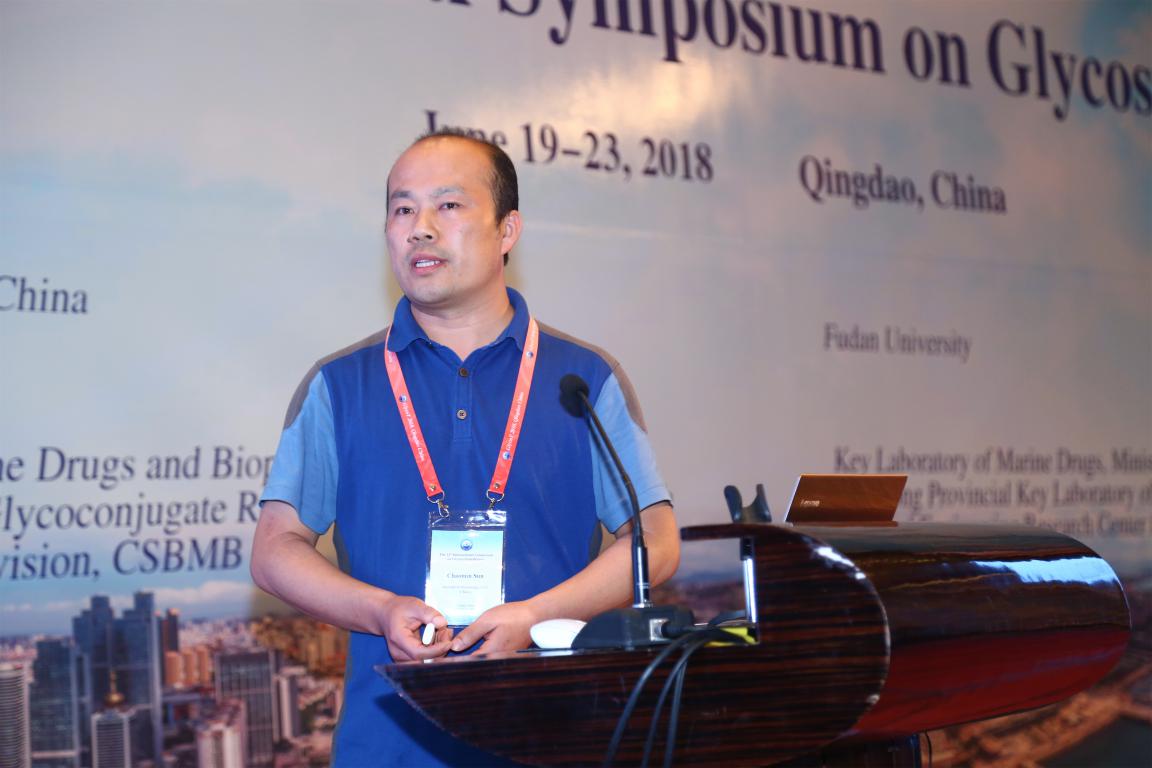
Prof. Chaomin Sun
Prof. Chaomin Sun (Institute of Oceanology, Chinese Academy of Sciences, China) introduced biosynthesis and action mechanism of marine bacterial polysaccharide with antibiofilm or anticancer activity. They found the exopolysaccharide EPS273 can effectively inhibit biofilm formation and disperse preformed biofilm of Pseudomonas aeruginosa PAO1. A novel marine bacterial polysaccharide EPS11 may be a potential candidate for human non-small cell lung carcinoma treatment via blocking filiform structures mediated adhesion and stimulating βIII-tubulin associated anoikis.
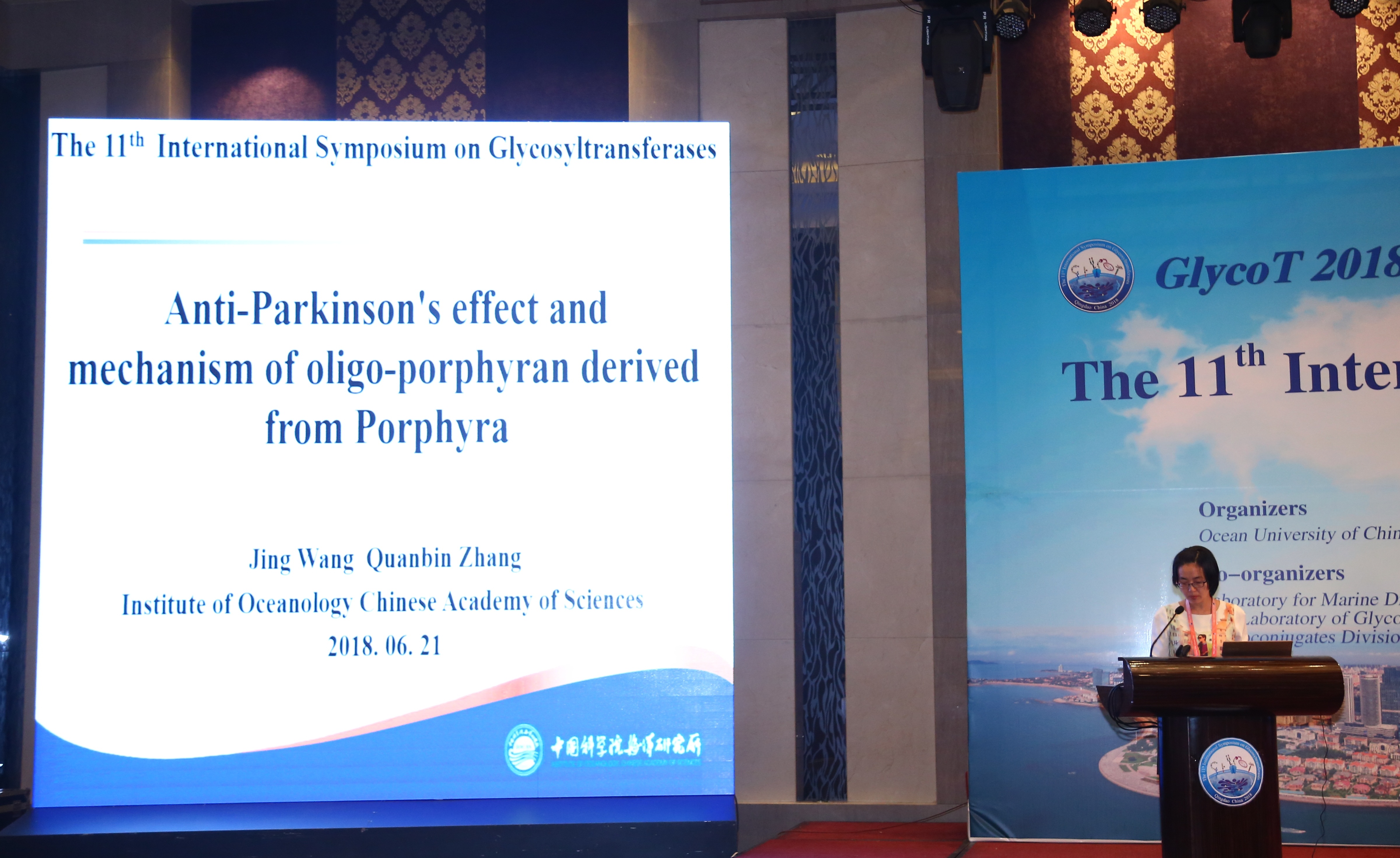
Dr. Jing Wang (Institute of Oceanology, Chinese Academy of Sciences, China) introduced anti-Parkinson’s effect and mechanism of oligo-porphyran (OP) derived from Porphyra in 6-OHDA induced PC 12 cells.They showed that OP might promote dopamine neuron survival in vivo by regulating the PI3K/Akt/Bcl-2 pathway, thereby ameliorating the neuro behavioral deficits. OP might be a neuroprotective treatment for PD.
Next was the poster session. Participants communicated with the poster authors about the questions they were interested in.